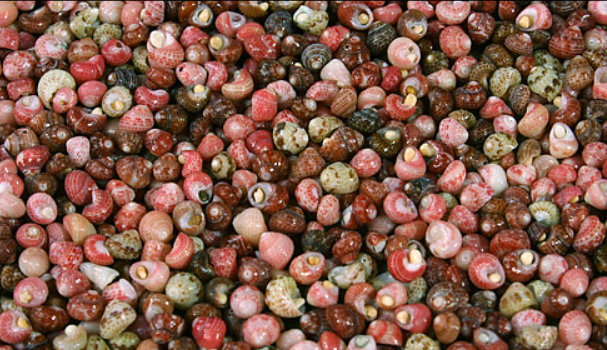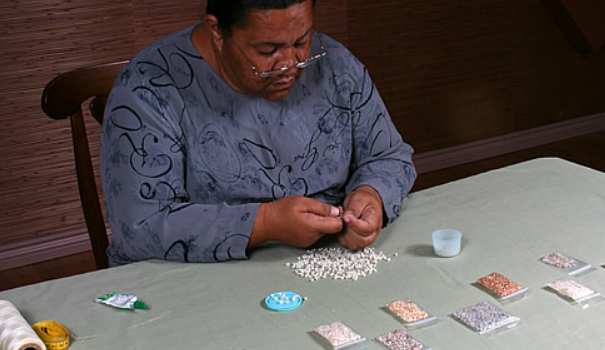Ni‘ihau Shells: the “Diamonds” of Hawaii

Diamonds and platinum may be a sign of luxury in the U.S. Mainland, but in Hawaii it’s Ni‘ihau shell jewelry. The rare and highly valued shells (kahelelani, laiki, momi, and kamoa), are found on the beaches of Ni‘ihau and crafted by the island’s residents into various styles of lei, earrings, and bracelets, equaling one of Polynesia’s most precious art forms.
Captain Cook returned from Hawaii with a Ni‘ihau shell lei that now resides in the British Museum. The jewelry is mostly sold on Kaua‘i, while some of it makes it to shops on other islands. A large amount is sold in stores on the west side and made by the shop’s owner or relatives on Ni‘ihau.

It’s not uncommon to encounter a clerk at one of Waimea’s shops and ask where she got her jewelry, only to hear that her niece or nephew made it. Here’s an opportunity to purchase the jewelry directly from its crafter, as many of these people are happy to give you a phone number to contact the person who made it.
The shells wash up on the beaches mostly October-March, when winter swells bring waves big enough to wash them ashore. This is when islanders rush to gather the shells and either make the jewelry on the island or send the shells to family on Kaua‘i to craft. The tiny shells are sorted by size and color, and only the best are kept; around 80 percent are thrown away. Many of the pink kahelelani that are found are a dull flesh color, worn rough, or are broken. The shell colors include bright pink, deep red, white, yellow, blue, and, rarely, gold. Holes are delicately drilled into the small shells, and they are then strung in a traditional fashion to make various types of jewelry. Most common are the necklaces and lei. Roughly twice as many shells than go into a lei are needed because around half are expected to break during the process. The lei are usually a combination of many strands, either hanging below each other or spiraling around each other.
The making of the jewelry, along with the entire process, is an intricate task and can take up to six months to complete. The Ni‘ihau women usually do the work, and whole families are involved in collecting, but I recently had a Waimea Big Save cashier tell me that her nephew made the beautiful earrings she was wearing and that he sells them, too. Ni‘ihau shell lei are the only shell necklace in the world that can be insured. Shells are used for Ni‘ihau lei because the dry island doesn’t have a sufficient environment to grow the abundance of flowers the other islands have.

To see a museum-type collection of Ni‘ihau shell work, visit the Hawaiian Trading Company in Lawa‘i, Kaua‘i visible from Highway 50. For a rare and valuable souvenir, Ni‘ihau jewelry is the perfect thing. The best book on Ni‘ihau jewelry is Ni‘ihau Shell Leis, by Linda Paik Moriarty, published by the University of Hawai‘i Press.
More information about Ni‘ihau including videos of artisans making shell lei, visit the Ni‘ihau Cultural Heritage Foundation website.
Newsletter Signup
By clicking ‘Sign Up,’ I acknowledge that I have read and agree to Hachette Book Group’s Privacy Policy and Terms of Use
Pin it for Later


